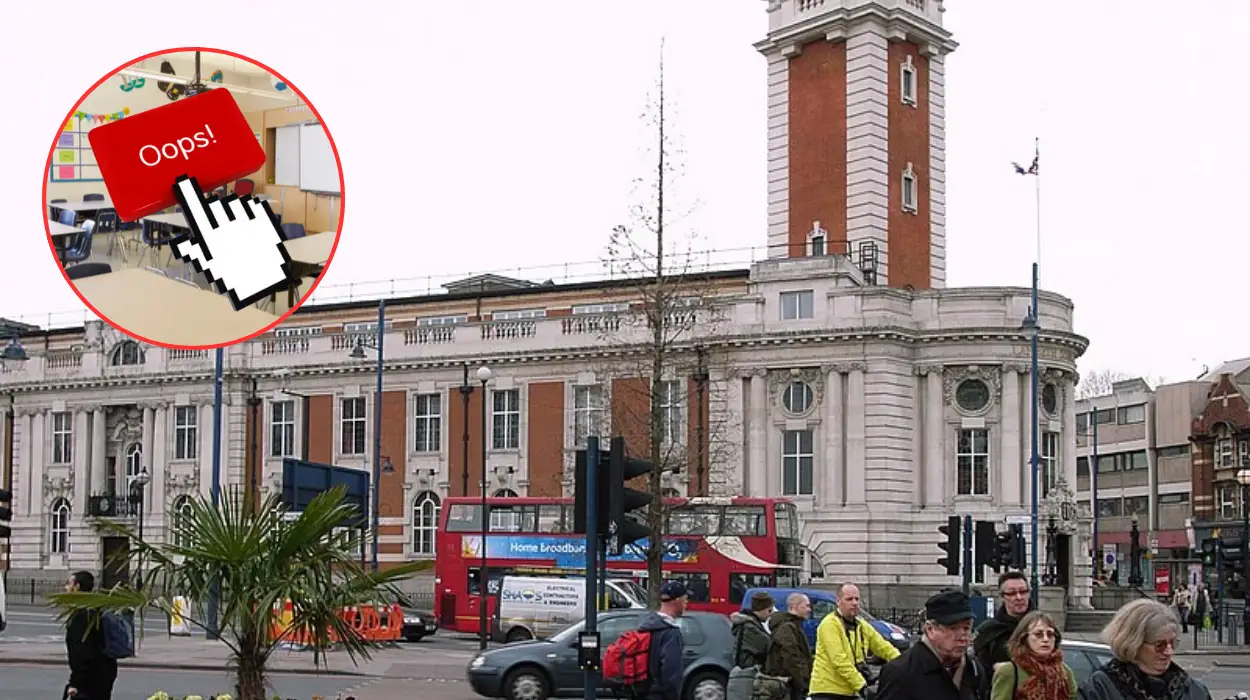Lambeth (Parliament Politics Magazine) – Lambeth Council faces criticism from the Schools Adjudicator for breaching legal procedures in its bid to merge two Church of England primary schools.
The ruling is consistent with the authority’s recent court losses on Brockwell Live and the Low Traffic Neighbourhood in West Dulwich. These indicate a broader trend: a Town Hall culture that seems perplexed by its own legal obligations in addition to ignoring local objections.
Schools Adjudicator Clive Sentance denied the Council’s plan to close St. John the Divine (SJTD) in August 2026 and combine it with Christ Church SW9 in a 19-page decision released this week.
The SJTD governing council forwarded the plan to the Adjudicator as part of a borough-wide reaction to declining school enrollment and budget problems.
The adjudicator concluded that in addition to Lambeth‘s noncompliance with statutory processes, the Council seemed to have a misunderstanding of important elements of the legislation governing school amalgamations.
Even though official documents and consultation materials frequently mentioned a “new amalgamated school,” the adjudicator came to the conclusion that Lambeth’s proposal amounted to the complete closure of SJTD, with students only being given spots at the Christ Church SW9 location.
The adjudicator wrote:
“It has become apparent that certain parties do not have a clear understanding of what happens when two schools merge… This misunderstanding goes beyond earlier shortcomings, and lies at the heart of my decision not to approve the proposal.”
He went on to say that claims made by Lambeth officers, such as the idea that all employees at both schools would be allowed to retain their positions following the merger, were “just not the case” in terms of the law.
Inaccurate references in official Cabinet documents and Equality Impact Assessments further weakened the Council’s strategy by misleading consultees into believing a new institution would be established rather than a closure and transfer.
It was also discovered that Lambeth’s consultation had serious flaws. The legal ramifications of the planned merger—namely, that at least one school must close—were not adequately explained in the stage-one documentation, and parents and the larger school community were not given a comprehensive overview of their options.
The adjudicator described this as a “serious shortcoming” that prevented stakeholders from providing well-informed answers. This is the case even though the proposal was rejected by a resounding 98% of consultation participants.
The Council came under fire for failing to give the Cabinet sufficient and precise data regarding the amount of students who were most likely to move to Christ Church. Since the majority of SJTD students reside in Southwark, where there are other educational options, this was seen as essential.
Additionally, the planned merger’s financial reasoning was not sound. Lambeth had contended that the action would lessen excess school spots and assist manage the borough-wide school deficit, which is expected to fluctuate between a £16.4 million surplus in 2023–2024 and a £23 million deficit by 2026–2027.
Lambeth stated that the merger would result in a stable, one-form-entry school, but the adjudicator concluded that the Council’s assumptions on student enrollment and school finances were not sound.
Given evidence that the majority of SJTD families stated they would oppose the relocation and enroll in Southwark schools instead, a crucial assumption—that all displaced students from SJTD would enroll at Christ Church—was rejected as impractical.
Even Lambeth’s own calculations indicated that Christ Church would experience a deficit unless it took on a sizable number of SJTD students, which the adjudicator stated was extremely unlikely.
Lambeth Council’s legal troubles are not the first time they have occurred. The decision comes after two recent court rulings.
A Lambeth Council spokesperson told Brixton Buzz:
“We are disappointed that the Office of the School Adjudicator disagreed with the council’s approach and by their decision, but we respect it and will now fully consider what it may mean for our approach in the future to ensure that it is in line with the OSA’s decision in this case.
We apologise to the parents, pupils and staff of both schools and the local community for the uncertainty that this decision now creates.”
The Council might need to reconsider its intentions, but locals are left wondering if Lambeth will correct its mistakes or simply keep losing the court battle.
Why did Lambeth Council fail to follow proper legal procedures in the school merger?
Neither the many types of merger that could be conceivable nor the fact that the planned amalgamation would require the closure of at least one school were made explicit in the original consultation document. This ambiguity made it difficult for consultees to offer insightful criticism.
The published statutory notice was deceptive since it mentioned the establishment of a “new amalgamated school” at the location of Christ Church, but the proposal really called for closing St. John the Divine and combining it with Christ Church, not starting a new school.
Even if the consultation period lasted the bare minimum of time, the process’s fairness and transparency were jeopardized by the general lack of communication and explanation of the proposal’s implications.


